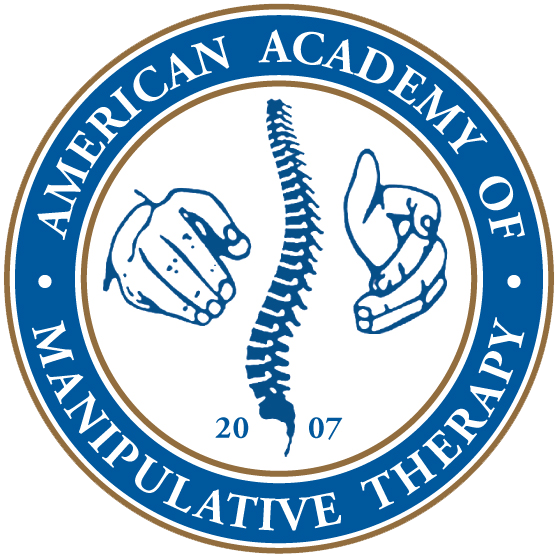Pre-Manipulative Testing Prior to Cervical Manipulation: Time to Abandon the VBI Test?
Considerable attention has been given to the potential risks associated with high-velocity, low-amplitude (HVLA) thrust manipulation procedures in the cervical region.1-5 The most recent and robust evidence for the risk of vertebrobasilar (VBA) stroke and cervical HVLA thrust manipulation comes from the case control study (n=818) by Cassidy et al.3 Contrary to traditionally held views,6,7 Cassidy et al3 found no evidence of excess risk of VBA stroke associated with cervical HVLA thrust manipulation compared to primary medical physician care. Moreover, after quantifying the strains and forces sustained by the vertebral artery in situ during manipulation, Symons et al8 concluded cervical HVLA thrust manipulation is “very unlikely to mechanically disrupt the vertebral artery.” Similarly, Austin et al9 found 1,000 repeat strain cycles mimicking cervical HVLA thrust manipulation did not cause histologically identifiable microdamage in arterial tissue. Additionally, using piezoelectric ultrasound crystals to measure strains and instantaneous lengths of vertebral artery segments within the transverse foramina, Wuest et al10 found the vertebral artery strains experienced during cervical HVLA thrust manipulation were substantially less than the strain in the C1-6 vertebral artery segments experienced during normal neck rotation or pre-manipulative vertebrobasilar insufficiency testing (i.e. sustained cervical extension plus rotation). Moreover, after a review of the literature,8-11 Herzog et al12 concluded, “cervical spinal manipulative therapy performed by trained clinicians does not appear to place undue strain on the vertebral artery, and thus does not seem to be a factor in vertebrobasilar injuries.”
Using magnetic resonance angiography to examine the effects of selected manual therapy interventions on blood flow in the craniocervical arteries and blood supply to the brain, Thomas et al13 concluded total blood supply to the brain was not compromised by C1-2 rotation, end-range rotation, or rotation and distraction positions commonly used in manual therapy. Likewise, using phase-contrast magnetic resonance imaging, Quesnele et al14 found no significant changes in blood flow or velocity in the vertebral arteries after various head positions and upper cervical HVLA thrust manipulations.
Physical therapists that still insist on using variations of the “VBI” test before manual therapy to the cervical spine—often due to claiming “it is standard practice” or “it provides legal protection”—should remember that the most recent literature suggests pre-manipulative cervical artery testing is unable to identify those individuals at risk of vascular complications from cervical HVLA thrust manipulation,2,15,16 and any symptoms detected during pre-manipulative testing are likely unrelated to changes in blood flow in the vertebral artery,13,14 so that a negative test neither predicts the absence of arterial pathology nor the propensity of the artery to be injured during cervical HVLA thrust manipulation, with testing neither sensitive or specific.2,5,15-18 Moreover, in a recent systematic review to evaluate the diagnostic accuracy of premanipulative tests, Hutting et al16 reported the sensitivity of the VBI tests was low (0% to 57%) and is considered not sufficient for clinical use in premanipulative screening procedures. In short, a large body of literature does not support continued use of the “VBI” test or what is now commonly referred to as pre-manipulative functional screening for Cervical Artery Dysfunction (CAD).
In another recent literature review, Murphy19 concluded “the current evidence indicates vertebral artery dissection syndrome is not a complication to cervical manipulation.” Similarly, in a 2014 systematic review, Chung et al20 found no epidemiologic studies to support the hypothesis that cervical spine manipulation is associated with an increased risk of internal carotid artery dissection in patients with neck pain or headaches. Moreover, another recent systematic review4 concluded there is no strong evidence linking the occurrence of serious adverse events with the use of cervical manipulation or mobilization in adults with neck pain.
The two largest randomized controlled trials21,22 within the past 10 years that have directly compared the effectiveness of cervical HVLA thrust manipulation with cervical non-thrust mobilization, did not report the specific vertebral motion segment targeted with the cervical HVLA thrust manipulation procedure. That is, it is not known whether patients with acute or chronic neck pain received upper, middle or lower cervical HVLA thrust manipulation in these two trials.21,22 Nevertheless, there were no serious neurovascular adverse events reported by any participants in either of the trials,21,22 and both trials reported no statistically significant difference in the incidence of minor adverse events between the cervical HVLA thrust manipulation and cervical non-thrust mobilization groups. Therefore to date, and in contrast to what many of us were taught in physical therapy school, there is no strong empirical evidence to support the notion that upper cervical HVLA thrust manipulation carries any greater risk of injury than middle or lower cervical HVLA thrust manipulation, or that non-thrust mobilization to any region of the cervical spine carries any less risk than HVLA thrust manipulation to the same region.1-4
AUTHORS:
James Dunning, DPT, MSc (Manip Ther), MMACP (UK), FAAOMPT
Director, AAMT Fellowship in Orthopaedic Manual Physical Therapy
President, Alabama Physical Therapy & Acupuncture
Montgomery, AL
Raymond Butts, PhD, DPT, MSc (NeuroSci), Cert. DN, Cert. SMT
Senior Instructor, Spinal Manipulation Institute & Dry Needling Institute
Senior Faculty, AAMT Fellowship in Orthopaedic Manual Physical Therapy
Atlanta, GA
Ulysses Juntilla, DPT, OCS, Cert. DN, Cert. SMT, Dip. Osteopractic
Senior Physical Therapist, WJB DORN VA Medical Center, Columbia, SC
Fellow-in-Training, AAMT Fellowship in Orthopaedic Manual Physical Therapy
Columbia, SC
REFERENCES
- Haldeman S, Kohlbeck FJ, McGregor M. Unpredictability of cerebrovascular ischemia associated with cervical spine manipulation therapy: a review of sixty-four cases after cervical spine manipulation. Spine (Phila Pa 1976). Jan 1 2002;27(1):49-55.
- Kerry R, Taylor AJ, Mitchell J, McCarthy C, Brew J. Manual therapy and cervical arterial dysfunction, directions for the future: a clinical perspective. J Man Manip Ther. 2008;16(1):39-48.
- Cassidy JD, Boyle E, Cote P, et al. Risk of vertebrobasilar stroke and chiropractic care: results of a population-based case-control and case-crossover study. Spine (Phila Pa 1976). Feb 15 2008;33(4 Suppl):S176-183.
- Carlesso LC, Gross AR, Santaguida PL, Burnie S, Voth S, Sadi J. Adverse events associated with the use of cervical manipulation and mobilization for the treatment of neck pain in adults: a systematic review. Manual therapy. Oct 2010;15(5):434-444.
- Kerry R, Taylor AJ. Cervical arterial dysfunction assessment and manual therapy. Manual therapy. Nov 2006;11(4):243-253.
- Rothwell DM, Bondy SJ, Williams JI. Chiropractic manipulation and stroke: a population-based case-control study. Stroke. May 2001;32(5):1054-1060.
- Smith WS, Johnston SC, Skalabrin EJ, et al. Spinal manipulative therapy is an independent risk factor for vertebral artery dissection. Neurology. May 13 2003;60(9):1424-1428.
- Symons BP, Leonard T, Herzog W. Internal forces sustained by the vertebral artery during spinal manipulative therapy. J Manipulative Physiol Ther. Oct 2002;25(8):504-510.
- Austin N, DiFrancesco LM, Herzog W. Microstructural damage in arterial tissue exposed to repeated tensile strains. J Manipulative Physiol Ther. Jan 2010;33(1):14-19.
- Wuest S, Symons B, Leonard T, Herzog W. Preliminary report: biomechanics of vertebral artery segments C1-C6 during cervical spinal manipulation. J Manipulative Physiol Ther. May 2010;33(4):273-278.
- Symons B, Wuest S, Leonard T, Herzog W. Biomechanical characterization of cervical spinal manipulation in living subjects and cadavers. J Electromyogr Kinesiol. Oct 2012;22(5):747-751.
- Herzog W, Leonard TR, Symons B, Tang C, Wuest S. Vertebral artery strains during high-speed, low amplitude cervical spinal manipulation. J Electromyogr Kinesiol. Oct 2012;22(5):740-746.
- Thomas LC, Rivett DA, Bateman G, Stanwell P, Levi CR. Effect of selected manual therapy interventions for mechanical neck pain on vertebral and internal carotid arterial blood flow and cerebral inflow. Phys Ther. Nov 2013;93(11):1563-1574.
- Quesnele JJ, Triano JJ, Noseworthy MD, Wells GD. Changes in vertebral artery blood flow following various head positions and cervical spine manipulation. J Manipulative Physiol Ther. Jan 2014;37(1):22-31.
- Taylor AJ, Kerry R. The ‘vertebral artery test’. Manual therapy. Nov 2005;10(4):297; author reply 298.
- Hutting N, Verhagen AP, Vijverman V, Keesenberg MD, Dixon G, Scholten-Peeters GG. Diagnostic accuracy of premanipulative vertebrobasilar insufficiency tests: a systematic review. Man Ther. Jun 2013;18(3):177-182.
- Licht PB, Christensen HW, Hoilund-Carlsen PF. Is there a role for premanipulative testing before cervical manipulation? J Manipulative Physiol Ther. Mar-Apr 2000;23(3):175-179.
- Magarey ME, Rebbeck T, Coughlan B, Grimmer K, Rivett DA, Refshauge K. Pre-manipulative testing of the cervical spine review, revision and new clinical guidelines. Manual therapy. May 2004;9(2):95-108.
- Murphy DR. Current understanding of the relationship between cervical manipulation and stroke: what does it mean for the chiropractic profession? Chiropr Osteopat. 2010;18:22.
- Chung CL, Cote P, Stern P, L’Esperance G. The Association Between Cervical Spine Manipulation and Carotid Artery Dissection: A Systematic Review of the Literature. J Manipulative Physiol Ther. Jan 3 2014.
- Hurwitz EL, Morgenstern H, Harber P, Kominski GF, Yu F, Adams AH. A randomized trial of chiropractic manipulation and mobilization for patients with neck pain: clinical outcomes from the UCLA neck-pain study. Am J Public Health. Oct 2002;92(10):1634-1641.
- Leaver AM, Maher CG, Herbert RD, et al. A randomized controlled trial comparing manipulation with mobilization for recent onset neck pain. Arch Phys Med Rehabil. Sep 2010;91(9):1313-1318.




